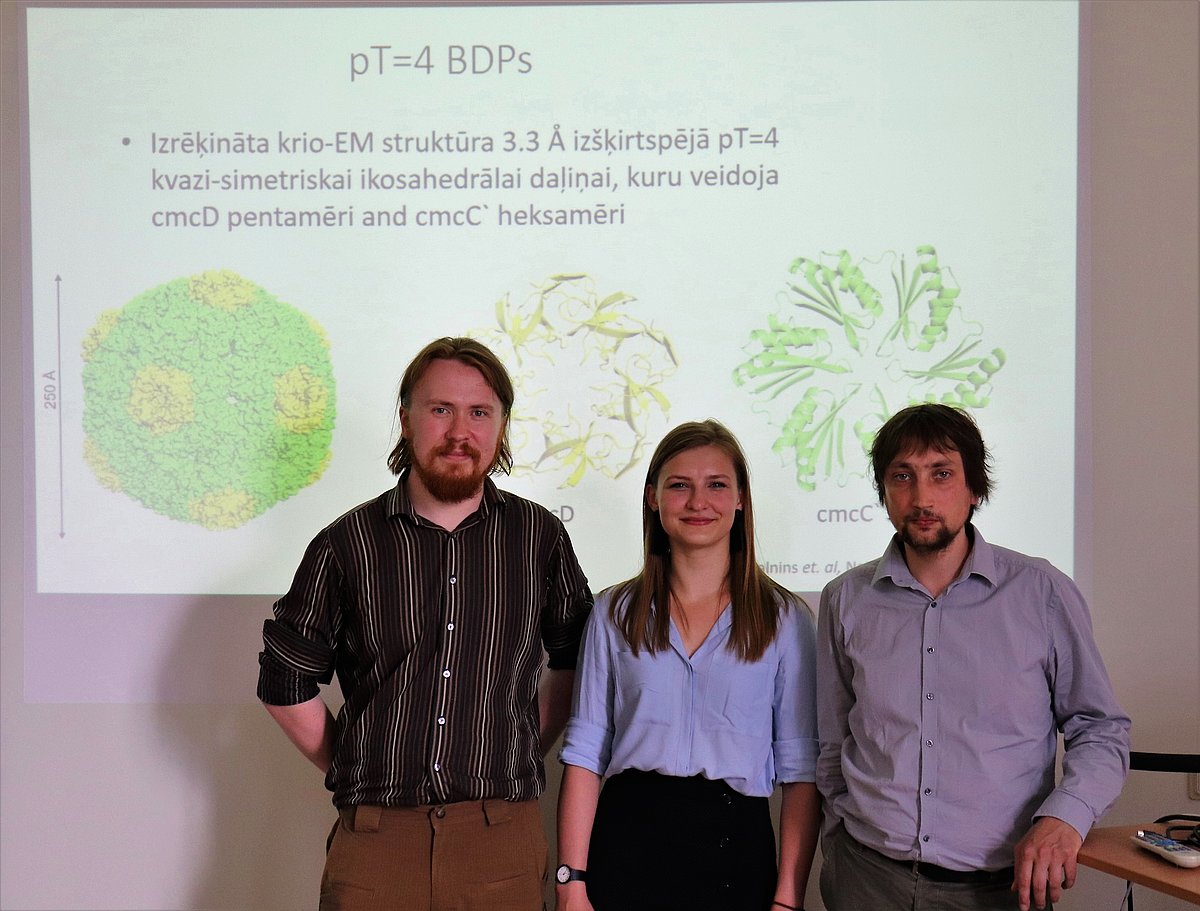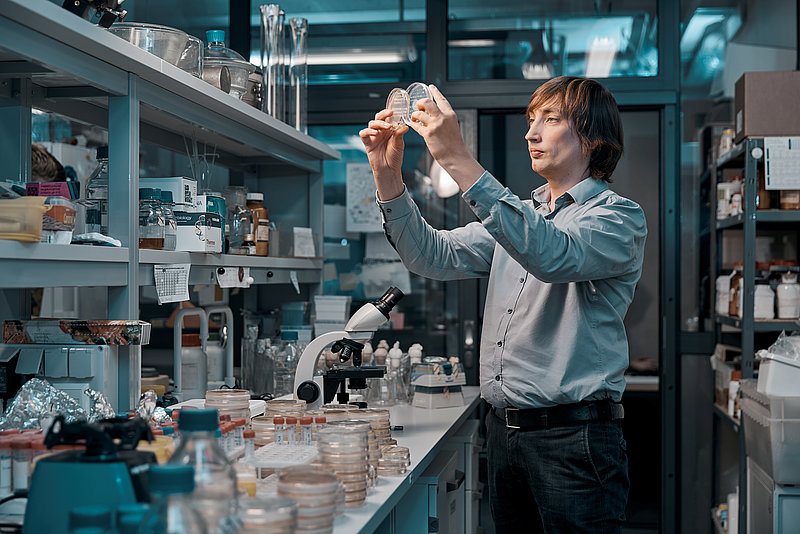
With the administrative support of the UL Foundation, the leading researcher Dr.biol. Jānis Liepiņš in cooperation with the researchers of the Latvian Biomedical Research and Study Centre (BMC) has implemented a significant project, studying bacterial microcompartments as synthetic nanoreactors. The contribution of Latvian scientists to research in this field is significant – for the first time, the principles of self-assembly of bacterial microcompartments have been recorded and described, and a three-dimensional structural image of bacterial microcompartment has been constructed. BMC researcher, Dr.biol. Gints Kalniņš and colleagues have prepared the scientific publication released in the recognised scientific journal “Nature Communications”, obtaining the highest impact factor so far (IF = 11.8).
Apartments of microworld
The head of the project J. Liepiņš explains that microcompartments are one of the types of bacterial cell inclusions, which have a definite, regular form. They perform certain functions, such as the capture of CO2 in intracellular proteins. About 40 % of the world's CO2 is captured by such bacterial inclusions, consequently, microcompartments play a major role in our ecosystem.
In the course of the study, the researchers looked at the possibility of producing bacterial microcompartments in other organisms widely used in molecular biology, as a result of which the bacterium is able to consume exotic or toxic substrates or improve the efficiency of CO2 capture. The participants of the project have used the artificial construct of the intestinal rod-shaped bacillus Klebsiella pneumoniae by inserting enzymes of their own interest.
To date, other researchers have found that the two genes that encode both the outer shell or the inner enzymes of a microcompartment are often grouped together so that the bacterium can quickly produce the microcompartments according to its needs.
"In the future, we could create an artificial construct with one, two enzymes in the shell and observe whether, firstly, the reactions take place at all and, secondly, whether they are radically different from those in which the enzymes are free-floating rather than enclosed in a microcompartment," Liepiņš outlines the future perspectives.
Results that open up new possibilities
Microcompartments can be used to create new platforms for the synthesis pathways of different substances with toxic or unstable intermediate compounds. This increases the carbon dioxide binding capacity of other microorganisms or terrestrial plants enabling faster and more efficient functioning. In the study, a group of researchers at the University of Latvia and BMC genetically modified the gut bacillus, creating a carbon dioxide-binding bacterium so that it could grow using CO2 available in the air or in solution. Respectively, bacterial microcompartments allowed to alter the way the carbon is taken up by the microorganism.
In the course of the project, the permeability measurements of microcompartment protein shells were performed, in addition studying the development and characterization of functional microcompartment. G. Kalniņš reconstructed a 3D image of the microcompartment, as well as its internal content, which can subsequently be mathematically modelled. In addition, different groups of bacteria have been found to have the same type of DNA sequences that apparently encode structures of the same nature. The operation of the hierarchical packaging system is also described.
A multiple scholarship holder of the UL Foundation, a graduate of the UL Faculty of Biology, MSc.biol. Eva Emīlija Česle developed a master's thesis on enzyme packaging strategy in microcompartments. The future studies must confirm the activity of the packaged enzymes, as well as develop a method that provides the possibility to pack several enzymes at the same time.
About the University of Latvia Foundation
Since 2004, the UL Foundation provides an opportunity to patrons and cooperation partners to support both the University of Latvia and other leading higher education institutions of our country, thereby investing in the future of Latvia. The priorities of the UL Foundation are to support the most outstanding, dedicated students and researchers, to advance creation of a modern study environment, as well as to promote construction and refurbishment of university’s buildings.

 Academic Centre
Academic Centre